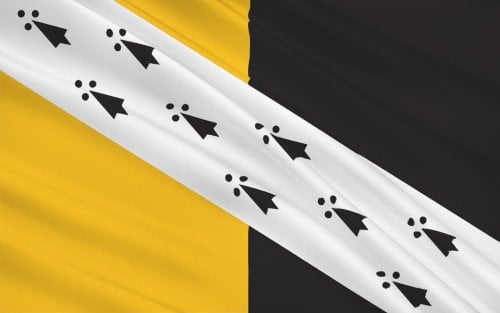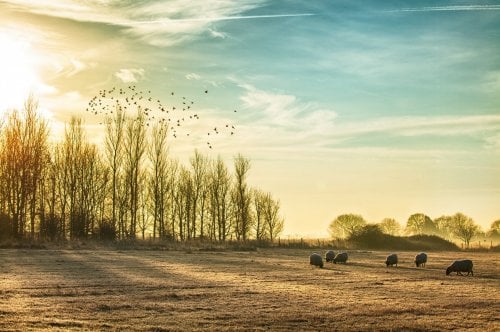Small fish has moved to smallfish.org.uk.
Norfolk

Norfolk is a county in Norteast England. The county's main town is called Norwich and has an urban population of around 200 000 citizens. Apart from the bigger towns, Norfolk is considered to be a rural area of England with lots of agriculture on not very densely populated lands. This stands in sharp contrast to history because 1000 years ago the westcoast of England was one of the most densely populated areas as a result of the prosperous farmlands.
The flag
This black-yellow flag is the official Flag of Norfolk. The flag was originally the banner of the first Earl of Norfolk, Ralph de Gael, and was adopted as early as in the 12th century. The ermine bend was a common, local emblem in Brettany where Ralph de Gael had served as lord. The original banner looked slightly different from today's flag, but it is still impressive that the county has managed to keep this one symbol throughout so many centuries.

For the North Folk
This part of England has a rather violent history, because of its situation on the east coast it was often exposed of attacks from Scandinavia as well as Northern Europe. Many forts were risen to protect the local inhabitants - the Angles and the Saxons, some of which are still out there to be admired. Norfolk got its name from being the region of the "north folk" (compare Suffolk being the region of the "south folk").
Norfolk today

Anyone visiting Norfolk today is struck by its natural beauty. There are, however, some major threats to the Norfolk coast line. The coast is mainly made up of easily eroded materials like clay and chalk, and the landscape is low-lying. Climate changes adds to the concerns about Norfolk's future where massive sea floods are the main concern, so a lot of research is being made and different plans are taken into consideration to strengthen and support the existance of this beautiful, and historically important, part of England.
Visiting Norfolk and its surroundings? Discover the best uk casinos which you can access on the go from anywhere in Great Britain!